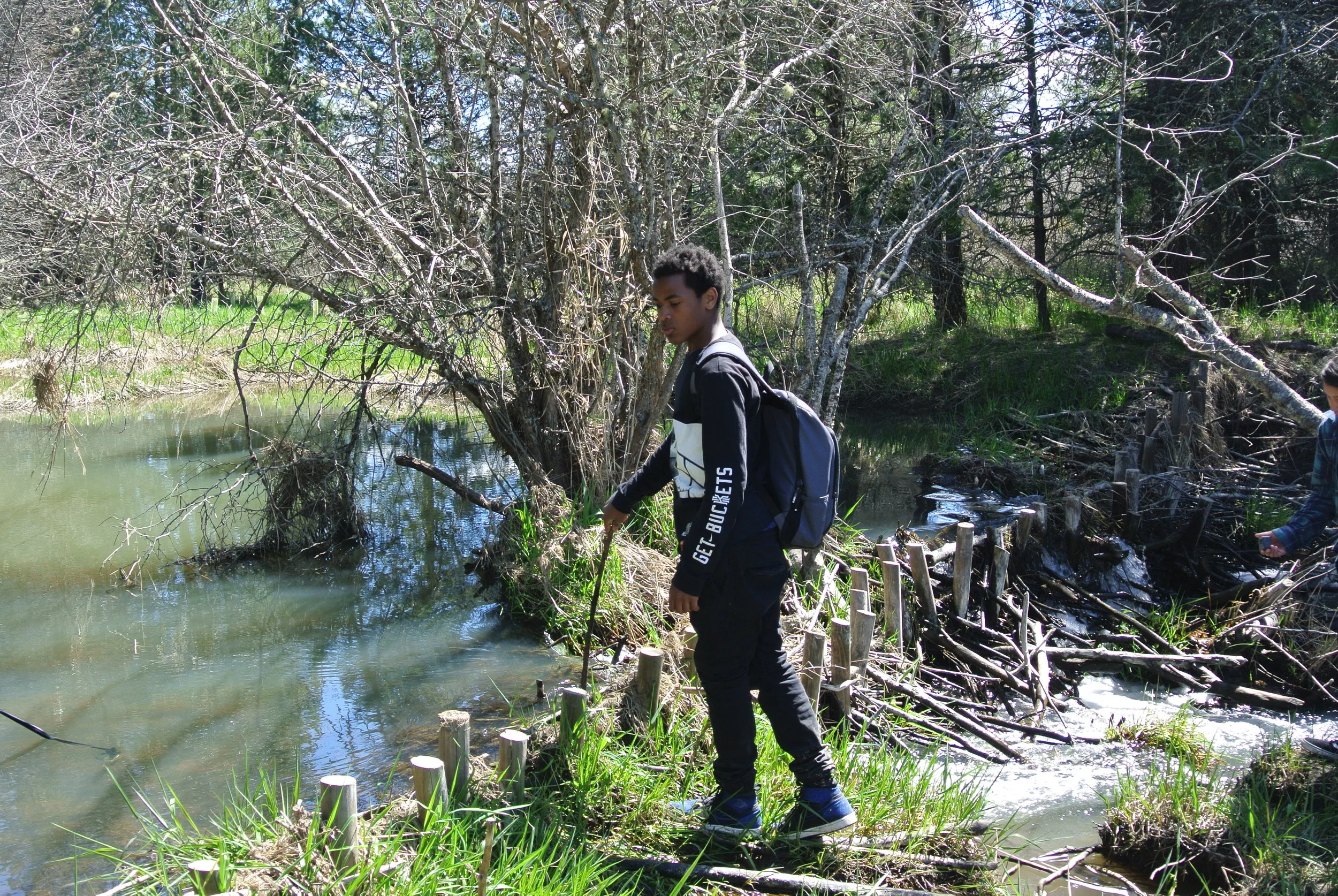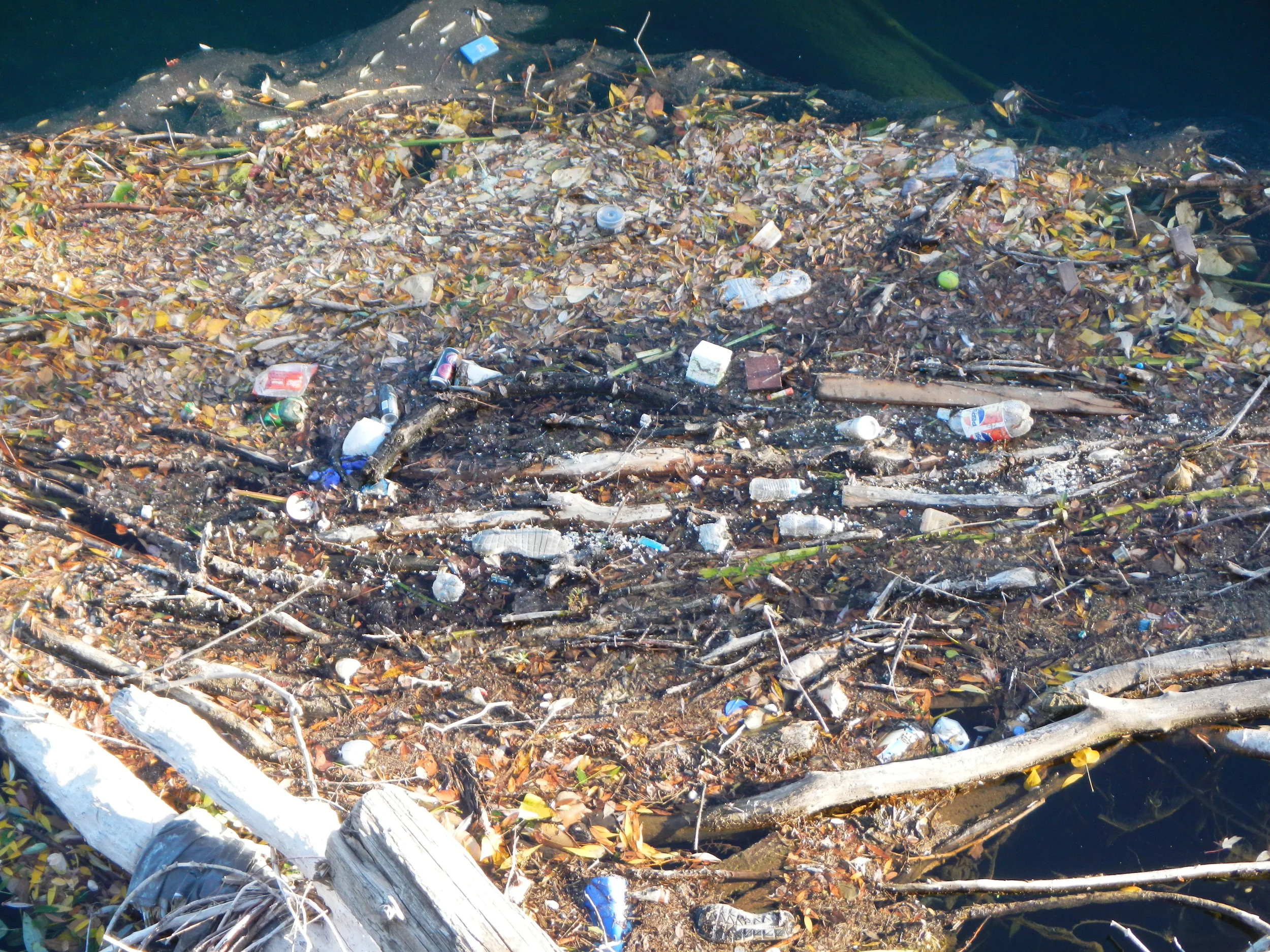Read about what we’ve been up to this winter and spring!
So as we stand on our own to feet, with your support and help, please remember that we are the organization out there on your river. We are not afraid to say what needs to be said to the power brokers and polluters, and we honor the commitment and vision of our partners and friends as they entrust the protection of their river to us and our efforts!
Meet Stacy Lee King, water quality sampler extraordinaire. Since she’s been participating in our citizen science sediment study for the past year, I thought I’d interview her. We met her, her dad Doug, and their dog down at 11th street bridge on their usual Monday water sampling run. Our study uses local volunteers to take water quality samples and data to understand the effects of the sediment pollution from Hangman Creek on the Spokane River.
Spokane Riverkeeper: Why are you participating in the citizen science study?
Stacy Lee King: I grew up by the confluence of Hangman Creek and the Spokane River and saw firsthand the sediment plume emptying into the Spokane River. This study allows me to help with that pollution problem by collecting data. In addition, it allows me to be outdoors and build community.
Spokane Riverkeeper: Explain what you mean by community.
Stacy Lee King: I come out and collect samples with my dad, my mom, and even my niece and nephew. The study gives me a purpose and reason to go down to the river, which is an important member of our community. It allows me to spend time with my family and take the dog out for a walk.
Spokane Riverkeeper: What led you to volunteer?
Stacy Lee King: I spend the previous 25 years in Minnesota, where I was involved in a theater production that focused on water. Now that I’m back in Spokane this study reconnected me with local water related issues. Now I’m a student at Spokane Community College in the Water Resources Program.
If you or someone you know would like to volunteer for our citizen science study, please let us know! Email me at [email protected] or to learn more click here.
The Spokane Valley-Rathdrum Prairie (SVRP) Aquifer, which spans both Washington and Idaho, is the sole source of water for the majority of Spokane County and Kootenai County. 15 to 100 thousand years ago, the deposits from the glacial floods of Lake Missoula created what we now know as the SVRP Aquifer. Historically, the Coeur d’Alene and Spokane Tribes lived around the SVRP Aquifer. The land and water provided fish, animals, and plants, as well as the river; the river became a central part of their history and culture. Today, the City of Spokane is the largest water purveyor for the SVRP Aquifer.
2019 has been another busy year of protecting your waters from toxic pollution, and 2020 will bring some very important decision points in this struggle. As many of you know, the Washington State water quality standard for toxics has been challenged by industry and their allies. This standard was put in place by the EPA to protect public health from toxins that build up in fish. Now, this public safety protection is in jeopardy of being rolled back. This year, we traveled to Seattle and stood with numerous tribal governments, NGOs and citizens to say do not weaken these protections from toxic pollution. We also published a guest opinion in the Spokesman-Review urging that the current standard stay in place.
Additionally, a new policy called "variances" threatens to give dischargers a "pass to pollute" by weakening the existing toxic pollution limits in our river. A variance would give legal exemptions from meeting the established water quality standards, which limit toxic pollution in your Spokane River. 2020 will see this fight heat up, so stay tuned and rest assured, the Spokane Riverkeeper will be at the forefront of fighting for a clean and healthy river!
As the climate warms, so do our waters. But to what extent and what can we do about it locally? Our work at the Spokane Riverkeeper aims to answer both of those questions. We monitor water temperature in Hangman Creek and the Spokane River. In previous years we have found alarmingly high water temperatures; water that could kill our native redband trout and is above state standards. Our surveys of the Hangman Creek watershed point to clear sources of this thermal pollution.
The State of Washington water laws follow a “first in time, first in right” clause, wherein senior water rights supersede junior rights. This is especially important in times of water shortage, since those with senior standing are guaranteed their water rights before those with junior standing. It is also important to note that no individual or group can own state water; rather, rights to use are granted to specific subjects. The actual water belongs to the public.
Variances are a regulatory tool that allow permit holders to exceed water quality standards for certain pollutants within a given timespan. Five dischargers (companies or local jurisdictions with pipes in the river) applied for a PCB variance, allowing them to put more of this cancer causing chemical in the Spokane River. Check out our presentation below for a summary of why this is a terrible idea.
During the summer of 2019 the Spokane Riverkeeper partnered with SNAP and Frontier Behavioral Health in a pioneering program combining outreach to homeless campers along the Spokane River with litter pickup. Read on for a summary of this program.
When most people think of water pollution, they imagine harmful chemicals or raw sewage pouring into waterways, poisoning fish and turning the pristine water into a green, sludgy mess. However, one of the most prevalent and dangerous forms of pollution threatening the Spokane River is sediment.
On July 16th, we conducted a routine sample of Hangman Creek at People’s Park for E. coli. E. coli. is a type of bacteria that lives in the guts of all warm-blooded animals, including humans. Most strains are completely harmless but the presence of living E. coli outside of the gut and in standing water is an indicator of bad water quality and fecal contamination that may cause human illness.
In November 2016, the Spokane River water quality standard for a bio-accumulative toxin called “polychlorinated biphenyls” (PCBs) was re-evaluated by the EPA under the Clean Water Act and strengthened. Since, there have been two reactions from polluters and regulating agencies. An effort, in concert with a Trump EPA to rescind the water quality standard rule at the federal level. And dischargers have applied to the Washington Department of Ecology for discharger variances.
This blog will explain what variances are, how they work, and if we should support them.
What happens when industries and entities who discharge into the Spokane River cannot meet the Water Quality Standard? What are other legal pathways to achieving clean water? Intern Anna Belinski explains the nuanced differences between our available options to a clean Spokane River in this blog post.
We couldn’t do the work we do without help, and the work that Dillon Wilke has done for us is beyond exceptional.
Dillon came to us about 5 years ago after reading a story about the Spokane Riverkeeper in The Inlander. Jule Schultz, Technical Lead for Riverkeeper, put him to work almost immediately, teaching him how to take water quality samples in Hangman Creek in the Spokane River, and taking him out on sampling runs each month.
For the fifth consecutive year, Spokane Riverkeeper staff installed temperature data loggers in Hangman Creek, from just below the headwaters to its confluence with the Spokane River near Peaceful Valley.
We study temperature in Hangman Creek to document the effects of climate change on water temperatures, and so we can share water quality violations with the public and the regulators. Temperature in Hangman and in the Spokane River is a huge concern. Native fish thrive only under 64.4 degrees F.
Spring/Summer 2019 edition: Citizen Science, Water Quality Standards, Climate Change, Plastic Monster Unveiled, A Beaver Tale
What does a bunch of kids running up a wheat field in the Palouse have to do with beavers and Hangman Creek? Here’s what.
We offered up the opportunity to teach a bunch of 9th graders at Pride Prep about why beavers are essential to restoring the headwaters of Hangman Creek, and they jumped at the chance.
The Spokane Riverkeeper collected water temperature data from the Hangman Creek watershed in 2018. All locations exceeded the state water quality standard of 64.4 F (18 C). Unlike previous years’ data, water temperature in the tributaries were similar to that of the main stem. In addition, water temperatures were lower in the main stem than in previous years. This may be due to the higher water table than in previous years that feeds Hangman Creek and results in higher flows. We compared temperatures in Hangman Creek with daily temperature records, flows, and aquifer height.
The Midnite Mine is a closed uranium mine on the Spokane Indian Reservation, west of Wellpinit, WA. The company responsible for cleaning up the mine has requested that the EPA accept a substantially less stringent cleanup level to address contaminated surface materials at the Site.
Please join us in supporting the state-wide ban on single use plastic bags. Write your legislators, and ask them to say YES to these two important bills.























